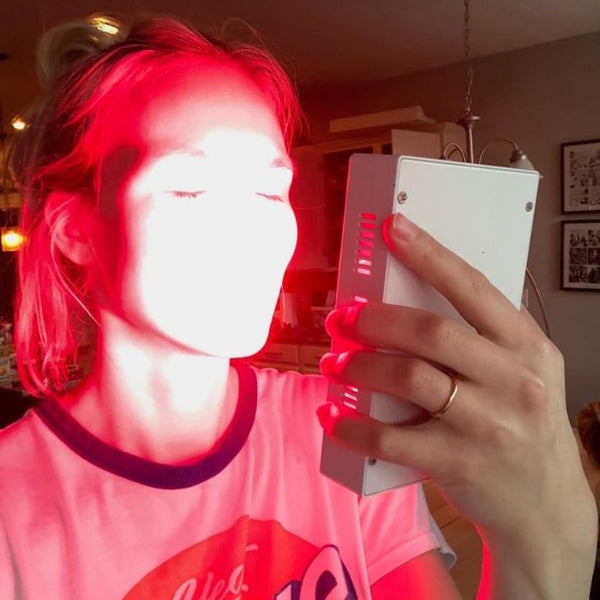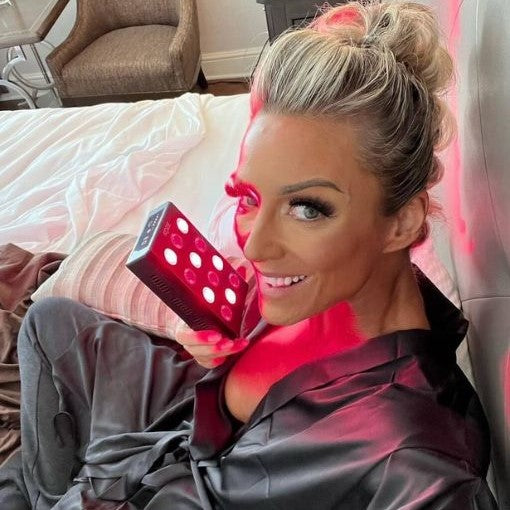
Red Light Therapy for Acne
Acne is more than just a cosmetic concern; it is a pervasive skin condition that affects millions of individuals worldwide, spanning various ages and backgrounds. Characterized by pimples, blackheads, and sometimes painful cysts, acne can lead to significant physical discomfort and emotional distress. The visibility of acne, especially on the face, can impact self-esteem, social interactions, and even professional opportunities, making effective treatment a crucial pursuit for many.
In the quest for new and effective treatments, red light therapy for acne emerges as a promising solution. This innovative first treatment of acne utilizes specific wavelengths of visible light used to penetrate the skin, aiming to reduce inflammation and stimulate healing without the harshness of chemicals or the invasiveness of surgical procedures.
Unlike traditional treatments that may involve topical medications or oral antibiotics, red light therapy offers a non-invasive alternative that works by enhancing the skin's natural healing processes.
Exploring innovative treatments like red light therapy is essential, as it represents a shift towards more gentle and holistic approaches to skincare. As research expands and technology advances, treatments like red light therapy not only offer hope to those suffering from acne but also illustrate the evolving landscape of dermatological care.
By understanding and embracing these advancements, individuals can find new ways to manage their acne effectively, potentially transforming their skin health and overall well-being.
Understanding Acne
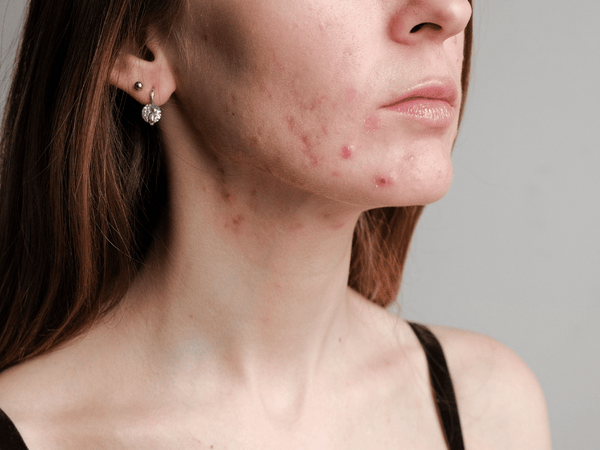
Before diving into the specifics of red light therapy, it’s crucial to understand the underlying condition it aims to treat—acne. Acne is not just a teenage issue; it can persist into adulthood and vary in severity. Red light therapy has shown effectiveness in treating mild to moderate acne, offering a beacon of hope for those struggling with this condition.
This section will explore the causes, types, including the treatment of acne vulgaris, a common form of acne that red light therapy aims to treat, and exacerbating factors and treatment of acne vulgaris.
What is Acne?
Skin cells and oil build up in hair follicles, which can cause acne, a dermatological disorder. This can lead to the formation of pimples, blackheads, whiteheads, and cysts. Predominantly appearing on the face, chest, and back, acne is influenced by several factors, including genetics, hormone levels, and skin type.
Common Types of Acne
-
Blackheads (open comedones): These are visible, black-tipped surface bumps.
-
Whiteheads (closed comedones): These remain under the skin and present as small, firm bumps.
-
Papules: Small, red, raised bumps caused by infected hair follicles.
-
Pustules: Papules topped with pus.
-
Nodules: Large, painful lumps beneath the surface of the skin.
-
Cysts: are deep, painful, pus-filled lumps that can cause scars.
Factors Exacerbating Acne
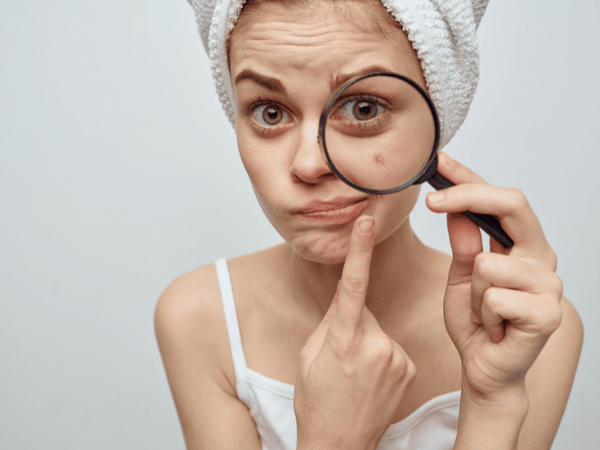
1. Hormonal Changes: are common in puberty, pregnancy, and even with certain medical conditions like polycystic ovary syndrome (PCOS).
2. Diet: High-glycemic foods and dairy products may worsen acne symptoms in some people.
3. Stress: It doesn't cause acne but can exacerbate it.
4. Medications: Certain drugs, including corticosteroids and lithium, are known to provoke or worsen acne.
5. Cosmetics: Some cosmetics can clog pores and worsen acne, especially if not suitable for acne-prone or sensitive skin.
Understanding acne in its various forms and recognizing the factors that can worsen the condition are fundamental in selecting the appropriate treatment method. Red light therapy, with its non-invasive nature, addresses inflammatory acne lesions without direct interaction with many of these exacerbating factors, providing a unique advantage in acne management.
What is Red Light Therapy?
Red light therapy (RLT) is a treatment gaining attention for its potential benefits in skin care, particularly for acne management. Unlike intense pulsed light (IPL) devices that emit a spectrum of wavelengths to activate multiple chromophores for treating acne, RLT focuses on a specific wavelength range to support skin health and healing.
This section will detail what red light therapy is, how it works, and the scientific principles behind its effectiveness. Additionally, the evolution of light-based topical treatments has seen the development of photodynamic therapy, which, like RLT, offers a targeted approach to acne treatment but utilizes photosensitizers to enhance the therapeutic effects of light exposure.
Definition of Red Light Therapy
Red light therapy involves exposing the skin to a specific wavelength of red or near-infrared light, typically between 630 and 680 nanometers. This treatment is delivered through light devices, like lamps, bulbs, or panels, which emit low-level red light at these wavelengths. The red light therapy device is painless, non-invasive, and does not involve ultraviolet (UV) light, making it safe for regular use.
How Red Light Therapy Works
Red light penetrates deep into the skin layers, where it has the ability to stimulate cellular activity and promote healing. Here’s how it impacts the skin:
-
Increased Collagen Production: Collagen is essential for skin elasticity and regeneration. Red light boosts collagen production, which can reduce the appearance of acne scars and improve skin texture.
-
Reduces Inflammation: RLT helps reduce inflammation in the skin, which is a major contributor to acne outbreaks.
-
Enhances Circulation: By improving blood flow, RLT can help to nourish skin cells and speed up the healing process.
The Development of Red Light Therapy Techniques
Originally developed for plant growth experiments in space by NASA, red light therapy has since evolved into a therapeutic tool for various medical and cosmetic conditions. Its application in dermatology is one of the latest advancements, showing significant promise in treating conditions like acne, psoriasis, and eczema.
Benefits of Red Light Therapy for Acne
Red light therapy (RLT) offers multiple benefits, specifically for acne-prone skin. This section explores how RLT can help manage and potentially reduce acne through its various therapeutic effects. Additionally, RLT accelerates wound healing in acne lesions, contributing to faster recovery and reduced inflammation by reducing the activity of inflammatory acne vulgaris, and accelerating the healing process.
1. Reduction in Inflammation
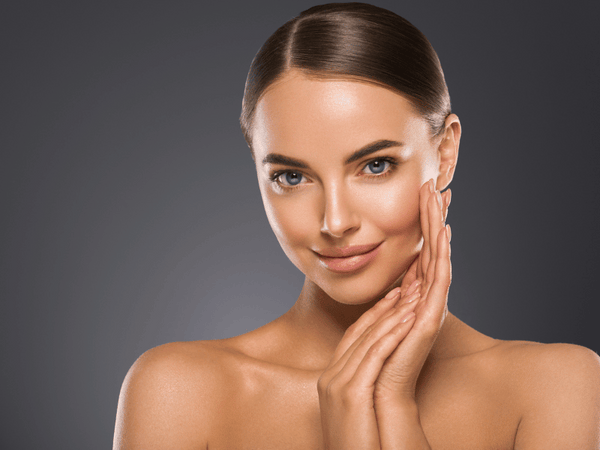
One of the primary advantages of RLT is its ability to reduce inflammation, a key factor in acne development. Inflammation can exacerbate acne by causing swelling and redness, which not only worsens the appearance of acne but can also lead to more severe skin damage and scarring. By decreasing inflammation, red light therapy helps calm the skin and reduce the severity of acne breakouts.
2. Stimulation of Cellular Repair and Regeneration

RLT promotes cellular growth and regeneration by stimulating the mitochondria, the powerhouse of the cell. This stimulation enhances the cells' ability to repair themselves, speeding up the healing process of acne lesions and reducing the likelihood of any acne scarring afterwards. Improved cellular function can also contribute to healthier skin overall, which is less prone to acne.
3. Increased Collagen Production

Collagen is crucial for maintaining the structural integrity and elasticity of the skin. Red light therapy boosts collagen production, which can help heal acne scars and improve skin texture. A smoother skin surface is less likely to develop acne, as there are fewer irregularities where bacteria and oils can accumulate.
4. Balancing Skin Oil Production
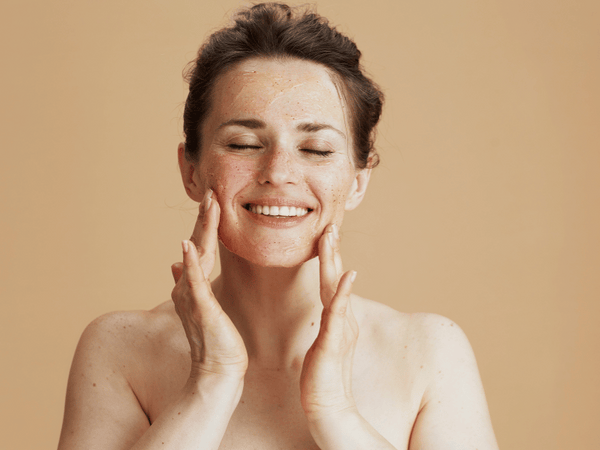
Excessive oil production is a common contributor to acne. RLT has been shown to help normalize oil production in the skin by affecting the sebaceous glands. This balance can prevent the clogging of pores and reduce the occurrence of acne.
5. Enhanced Blood Circulation

Improved blood flow to the skin, another benefit of RLT, ensures that more nutrients and oxygen are delivered to skin cells. This enhancement aids in the detoxification and nourishment of the skin, supporting a healthier complexion and reducing the prevalence of acne.
6. Non-Invasive and Safe
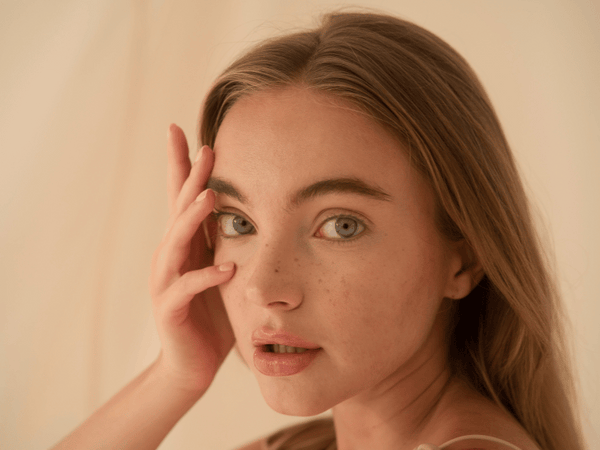
Unlike some acne treatments that involve harsh chemicals or physical interventions that can irritate the skin further, RLT is non-invasive and safe for regular use. This makes it an excellent option for individuals with sensitive skin or those who prefer a gentler approach to acne treatment.
Comparative Effectiveness with Other Treatments
While traditional treatments like topical creams and antibiotics are effective for many, red light therapy offers a viable alternative with fewer side effects. It can be used in conjunction with other medical treatments, either to enhance overall results or as a standalone laser therapy, depending on individual needs and conditions.
How to Use Red Light Therapy for Managing Acne
Implementing red light therapy (RLT) as part of your acne management routine can be straightforward, but it’s important to follow certain guidelines to maximize the blue light therapy’s effectiveness. This section provides a step-by-step guide on how to use red light therapy safely and effectively at home.
Step-by-Step Guide to Using RLT for Acne
-
Type of Device: Select a device specifically designed for treating acne, which may include handheld devices, masks, or panels.
-
Wavelength: Ensure the device emits light at the optimal wavelengths for acne treatment, generally between 630 and 680 nanometers.
2. Preparation:
-
Cleanse Your Skin: Start with a clean face. Remove any makeup, oils, or dirt that might block the light from penetrating the skin effectively.
-
Safety First: Always read the manufacturer’s instructions. Use safety goggles if recommended, as direct exposure to red light can be harmful to your eyes.
3. Treatment Process:
-
Positioning: Position the device 6 to 12 inches away from the face, depending on the manufacturer’s instructions.
-
Duration and Frequency: Typical treatment times range from 10 to 20 minutes per session. Use RLT two to three times a week to start, then adjust based on your skin’s response and the device’s guidelines.
4. Post-Treatment Care:
-
Hydration: Apply a gentle moisturizer if your skin feels dry after the session.
-
Monitoring: Keep an eye on your skin’s response to the treatment. Some redness immediately after use is normal, but if irritation occurs, reduce frequency or duration.
5. Maintenance:
-
Consistency is Key: Regular use is crucial for seeing sustained results. Consistency in treatment will help maintain the benefits over time.
-
Adjustments: As your skin condition improves, you may need to adjust the frequency or duration of treatments.
Tips for Maximizing Effectiveness
-
Combine Treatments: While RLT is effective on its own, combining it with other acne treatments (after consulting with a dermatologist) can enhance results.
-
Lifestyle Considerations: Complement your RLT regimen with a healthy diet, adequate hydration, and proper sleep—all of which can improve skin health.
-
Patience and Persistence: Like any skincare treatment, red light therapy requires time to show results. Be patient and consistent with your treatments.
Safety Considerations
-
Avoid Overuse: More is not always better. Overusing RLT can lead to skin dryness or irritation.
-
Consult professionals: If you have severe acne or other skin conditions, consult with a dermatologist before starting RLT to ensure it’s suitable for your skin type and condition.
How KOZE LED Face Mask helps manage Acne
The KOZE LED Face Mask is a cutting-edge tool designed specifically for facial skin care, utilizing the power of LED light therapy to target and treat acne effectively. This section explores the features of the KOZE LED Face Mask and how it can be integrated into your skincare regimen to combat acne.
Features of the KOZE LED Face Mask
-
Multiple Wavelengths: The KOZE LED Face Mask offers a range of light wavelengths, including red and blue light, which are both beneficial for acne treatment. Red light helps reduce inflammation and promote healing, while blue light targets and kills acne-causing bacteria on the skin’s surface.
-
Full Coverage Design: Designed to fit comfortably over the entire face, the mask ensures uniform light exposure to all areas prone to acne, such as the forehead, cheeks, and chin.
-
Ease of Use: The mask is user-friendly, with simple controls and a timer, making it easy to use at home without professional supervision.
-
Safety Features: Equipped with safety features like eye protection and auto shut-off, the mask is safe for regular use.
Benefits of Using the KOZE LED Face Mask for Acne
1. Targeted Acne Treatment:
-
The dual-action light therapy targets the primary causes of acne: bacteria and inflammation.
-
Regular use can reduce the occurrence of breakouts and improve overall skin clarity.
2. Enhanced Skin Health:
-
Beyond just treating acne, the mask promotes collagen production and improves skin elasticity, leading to healthier, more resilient skin.
3. Convenience and Comfort:
-
The KOZE LED Face Mask offers a practical and comfortable treatment option that can be used in the privacy of your own home.
-
Sessions are short and can easily be incorporated into a daily skincare routine.
How to Use the KOZE LED Face Mask for Acne Management
-
Preparation: Begin with a clean, dry face. Ensure that there are no cosmetics, lotions, or anything that might reflect or block the light.
-
Application: Wear the mask according to the manufacturer’s instructions, adjusting it for comfort.
-
Duration: Follow the recommended duration for light exposure, typically about 15-20 minutes per session.
-
Frequency: Most effective results are often achieved with regular use, about 3–4 times per week.
-
Post-Use Care: After using the mask, apply a gentle moisturizer if necessary to keep the skin hydrated.
Tips for Optimal Results
-
Consistency: Regular use is key to achieving significant results with the KOZE LED Face Mask.
-
Combine Skincare Approaches: For best results, integrate the mask into a broader skincare routine that includes proper cleansing, hydration, and occasional exfoliation.
-
Monitor Skin Response: Pay attention to how your skin responds to the treatment and adjust frequency or duration as needed.
Using the KOZE LED Face Mask as part of your acne management strategy offers a modern, effective, and safe way to improve skin health and combat acne. The convenience and clinical efficacy of the mask make it a valuable addition to any skincare regimen, particularly for those looking to harness the benefits of LED light therapy at home.
9 FAQs About Red Light Therapy for Acne
Red light therapy (RLT) for acne is gaining popularity, but many individuals still have questions about its effectiveness, safety, and how it compares to other treatments. This section addresses some of the most common questions and misconceptions about red light therapy for acne. Specifically, red light therapy is particularly effective for moderate acne and moderate facial acne, emphasizing its suitability for a range of other facial acne and severities, including mild-to-moderate acne.
1. What exactly is red light therapy?
Red light therapy involves exposing the skin to a specific wavelength of red light, usually between 630 and 680 nanometers. This light penetrates the skin and is absorbed by the cells, which can help reduce inflammation, promote healing, and improve skin health.
2. How does red light therapy help acne?
Red light therapy helps treat acne by reducing inflammation and promoting collagen production. It also improves circulation, which can help to repair damaged skin and decrease the appearance of scars. Unlike blue light therapy, which kills bacteria, red light therapy primarily helps inflammatory acne by enhancing the skin’s natural healing processes.
3. Is red light therapy safe?
Yes, red light therapy is considered safe for most people. It does not contain UV rays, which are harmful to the skin. However, it’s important to use the red light device during therapy sessions according to manufacturer guidelines and consider eye protection if the device does not already provide it.
4. Can red light therapy cure acne permanently?
While red light therapy can significantly improve acne symptoms and may lead to long-term skin health benefits, it is not a permanent cure. Acne can be influenced by many factors, including hormones, diet, and stress. Regular treatment may be necessary to maintain the benefits.
5. How often should I use red light therapy for acne?
Most manufacturers recommend using red light therapy two to three times per week for optimal results. Each low level light therapy session typically lasts about 10 to 20 minutes. It's important to follow the specific instructions provided with your device.
6. Can I use red light therapy if I have sensitive skin?
Yes, red and blue light, therapy is generally well-suited for sensitive skin because it does not involve harsh chemicals or invasive procedures. If you have concerns, start with low level blue or red light therapy for shorter sessions and gradually increase as your skin adjusts.
7. Are there any side effects of red light therapy?
Side effects from red light therapy are rare and usually mild, but they can include temporary redness, skin irritation, or dryness of the treated skin area. If you experience more severe side effects, it’s best to consult with a dermatologist.
8. Can red light therapy be used with other acne treatments?
Yes, red light therapy can be combined with other acne treatments, such as laser treatments, topical creams, and oral medications. It’s often used as part of a comprehensive skin care regimen. Always consult with a healthcare provider before combining treatments with other visible light therapies to ensure they are safe and effective together.
9. How quickly will I see results from red light therapy?
Results can vary, but many users see improvements in their skin condition within a few weeks of consistent use. As with many skin treatments, results are best observed over time with regular use.
Conclusion
Red light therapy (RLT) represents a significant advancement in the treatment of acne, providing patients with a safe, non-invasive, and effective alternative to traditional acne therapies. By reducing inflammation, enhancing collagen production, and improving overall skin health, RLT offers a promising solution for those seeking to manage their acne with minimal side effects.
Key Takeaways:
-
Effectiveness: Red light therapy has been scientifically proven to reduce acne symptoms by promoting healing and reducing inflammation.
-
Safety: RLT is safe for regular use and is suitable for all skin types, including sensitive skin. It does not emit UV light and is generally well-tolerated by most users.
-
Convenience: With the availability of home devices like the KOZE LED Face Mask, red light therapy can be easily incorporated into your daily skincare routine.
-
Holistic Approach: While RLT is powerful on its own, it works best when combined with a comprehensive skincare regimen and a healthy lifestyle.
As with any skincare treatment, the results of red light therapy can vary based on individual skin types and conditions. It is always advisable to consult with a dermatologist or skincare professional before beginning any new treatment, or red light therapy sessions, especially if you have severe acne or other skin concerns.
In conclusion, if you are looking for an effective and modern approach to combating acne, red light therapy offers a compelling option worth considering. By harnessing the power of light, it not only treats the symptoms of acne but also promotes a healthier, more vibrant complexion.
Thank you for following this comprehensive guide on red light therapy for acne. Whether you are just starting your journey with RLT or looking to deepen your understanding, we hope this guide has provided valuable insights and practical advice to help you achieve your skincare goals.
If you have any further questions or need more detailed information on specific aspects of red light therapy, please feel free to reach out or consult additional resources. Here's to a clearer, healthier future!
